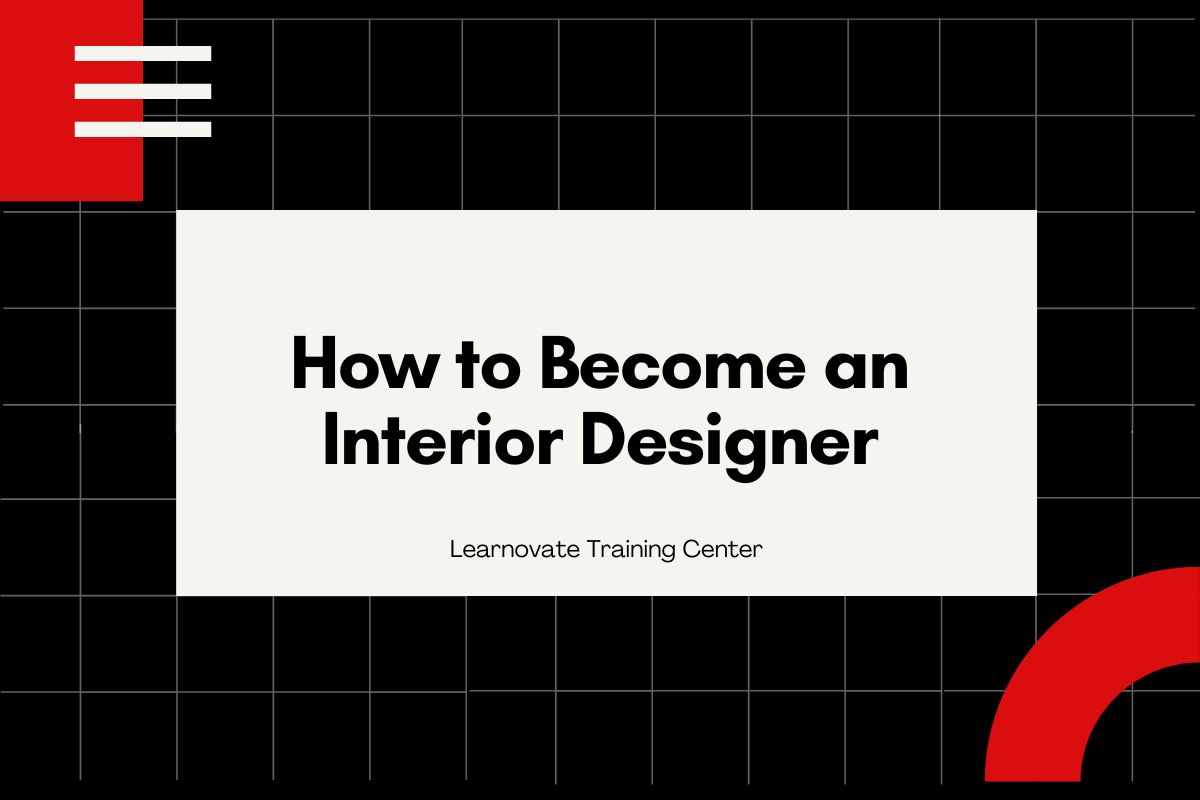Interior design is an exciting and creative career where you can transform spaces into beautiful, functional environments. If you love decorating, arranging furniture, and bringing out the best in any room, you might have what it takes to become an interior designer. This guide will show you how to become an interior designer, what skills are necessary, and how you can start your journey in this field.
Starting your path to becoming an interior designer doesn’t have to be complicated. With the right education, some creativity, and a keen eye for detail, you can begin designing stunning spaces that inspire others. Let’s dive into how you can turn your passion for design into a successful career.
What Does an Interior Designer Do?
Interior designers plan and create spaces that are not only visually appealing but also functional and safe. They work on different projects, including homes, offices, restaurants, etc. As an interior designer, you will choose colors, materials, and furniture that fit the client’s needs and budget.
Your job will also include sketching design plans, sourcing materials, and coordinating with other professionals like architects and contractors. You’ll need to understand the needs of your clients and translate their ideas into beautiful designs that match their vision and lifestyle.
Education Needed to Become an Interior Designer
To become an interior designer, you usually need a degree in interior design or a related field. Many colleges and universities offer programs that teach you the basics of design, including space planning, color theory, and computer-aided design (CAD) software. A degree will give you the foundational knowledge to start your career.
Some people also take short courses or certificate programs that focus on specific skills, such as lighting design or sustainable design. Getting a formal education is important because it not only teaches you technical skills but also boosts your confidence in working with clients. Whether you choose a degree or a certificate, make sure the program you select is accredited.
Develop Essential Skills
Interior designers need a mix of creative and technical skills. Creativity helps you come up with unique design ideas, while technical skills like using design software ensure you can bring those ideas to life. Learning software like AutoCAD, SketchUp, and Photoshop is essential for creating professional designs and presentations.
Communication skills are also critical because you will often need to explain your ideas to clients, contractors, and team members. Good time management skills will help you handle multiple projects at once, ensuring you meet deadlines and keep clients happy.
Gain Experience and Build a Portfolio
Experience is key to becoming an interior designer. You can start by interning at a design firm or working as an assistant to an experienced designer. This hands-on experience will teach you the ins and outs of the industry and allow you to see how professional designers work with clients.
A portfolio is a collection of your best work, showcasing your design skills and creativity. As you gain experience, make sure to document your projects with high-quality photos and detailed descriptions. A strong portfolio is one of the most important tools for landing clients or a job at a design firm.
If you’re interested in enhancing your skills and knowledge, consider enrolling in our Interior Designing Course. It’s designed to provide you with the skills needed to excel in this creative field.
Get Licensed or Certified
In some places, interior designers need to be licensed or certified to work professionally. This often involves passing an exam, such as the National Council for Interior Design Qualification (NCIDQ) exam in the United States. Certification shows clients that you have the knowledge and skills required to design safe and functional spaces.
While not all regions require certification, having it can give you an edge over other designers and allow you to work on more complex projects. Research the requirements in your area to ensure you meet the necessary qualifications.
Start Networking and Build Your Brand
Networking is a crucial part of building your interior design career. Attend industry events, join professional organizations like the American Society of Interior Designers (ASID), and connect with other designers, contractors, and potential clients. Networking can lead to new job opportunities and partnerships that help grow your business.
Building your brand involves creating a unique style or niche that sets you apart from other designers. Use social media platforms, like Instagram and Pinterest, to showcase your work and attract followers. A professional website with your portfolio, contact information, and client testimonials can also help establish your brand.
Find Your Niche and Specialize
Specializing in a niche can help you stand out as an interior designer. You might focus on sustainable design, luxury interiors, kitchen and bathroom design, or commercial spaces. Specializing allows you to become an expert in a particular area, making you more attractive to clients looking for specific skills.
Choosing a niche can also help guide your marketing efforts and streamline your services. It allows you to target a specific audience who values your expertise, making it easier to build a loyal client base.
Set Up Your Interior Design Business
If you decide to work independently, setting up your interior design business is the next step. This involves registering your business, creating a business plan, and setting up your finances. You will also need to decide on the services you offer, such as space planning, furniture selection, and color consultation.
Marketing your business is essential to attract clients. Use social media, local advertising, and word-of-mouth to spread the word about your services. Don’t forget to ask satisfied clients for referrals, as they are often the best way to get new business.
Stay Updated with Industry Trends
Interior design trends are always changing, so staying updated is essential. Follow design magazines, attend trade shows, and take continuing education courses to keep your skills and knowledge fresh. Trends like eco-friendly design, smart home technology, and minimalistic styles are popular now, and knowing these can help you better serve your clients.
Being aware of the latest trends will also help you create designs that feel current and in demand. Clients appreciate designers who bring fresh, modern ideas to their projects.
Start Designing and Gaining Clients
Once you have the skills, experience, and certification, it’s time to start designing professionally. Whether you work for a firm or start your own business, focus on delivering high-quality work that exceeds client expectations. Your reputation is your best marketing tool, so always aim for excellence in every project.
Gaining your first few clients may be challenging, but remember to leverage your network, ask for referrals, and use your portfolio to showcase your abilities. As you build a reputation for quality work, more clients will come your way.
Conclusion
Becoming an interior designer is a rewarding career that combines creativity with practical skills. By following the steps outlined in this guide, you can learn how to become an interior designer and start your journey in this exciting field. Remember, education, experience, and a strong portfolio are key to your success.
If you’re passionate about transforming spaces and have a knack for design, now is the perfect time to pursue this career. With hard work, dedication, and the right resources, you can become an interior designer and make a lasting impact on the world of design.
For more information on licensing and certifications, you can visit the National Council for Interior Design Qualification (NCIDQ) official website.













